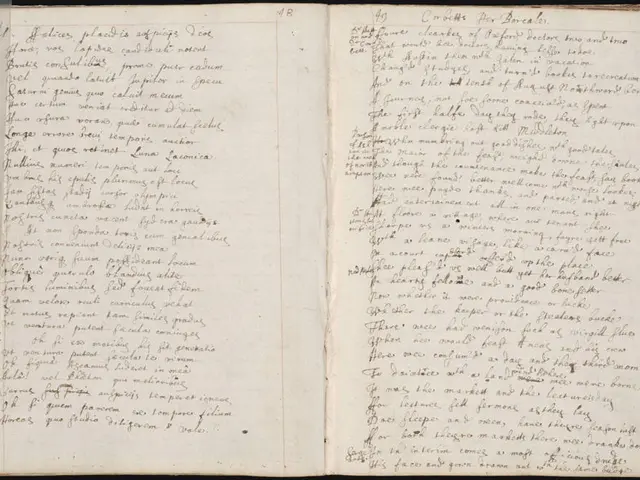Secret Operations of Montauk Project: U.S. Military's Alleged Mind Manipulation Experiment
Mysterious Project Montauk: A Cold War-Era Conspiracy Theory Unearthed
Project Montauk, a clandestine military initiative allegedly conducted on Long Island's eastern coast during the Cold War, remains shrouded in controversy and intrigue. The secret experiment is said to have delved into the realm of psychological warfare, abducting children for experimental purposes. Though often dismissed as mere fiction, its chilling narrative continues to captivate the public imagination.
The origins of the Montauk Project narrative can be traced back to 1992 and Preston B. Nichols' self-published book, "The Montauk Project: Experiments in Time." The book added fuel to existing rumors about classified military experiments on Long Island, stirring curiosity about the Mountain Air Force Station located in the town of Montauk.
During World War II, a Naval Air Station was established at Montauk, followed by a U.S. Army-commissioned Camp Hero during the Cold War. The site, later named the Montauk Air Force Station, was used for radar surveillance. It was decommissioned in 1981 and re-purposed as Camp Hero State Park.
Nichols claimed to have served as a researcher for the Montauk Project, recounting experiments in mind control, telepathy, interdimensional travel, alien contact, and the abduction of runaway children. The project was reportedly financed by Nazi gold recovered during World War II through a U.S. military program.
Upon publication, Nichols' book sparked additional testimonies, perpetuating a cycle of mutual reinforcement typical of conspiracy theories. Unraveling the complex web of claims presents a daunting task, but delving into the story's foundations offers a compelling starting point.
The Montauk Project intertwines with another well-known conspiracy theory: the Philadelphia Experiment of 1943. This theory posits that the U.S. military experimented with electromagnetic fields to render a Navy ship invisible and teleport it from Philadelphia to Norfolk, Virginia. Despite numerous inconsistencies and disagreements among witnesses, the Philadelphia Experiment serves as a precursor to the Montauk Project narrative.
In 1984, a movie based on the Philadelphia Experiment titled "The Philadelphia Experiment" was released. Al Bielek, a 57-year-old man, saw the film in 1988, claiming it triggered intense déjà vu. Upon using new age therapies to recall his memories, Bielek alleged involvement in both the Philadelphia Experiment and the Montauk Project, which he said continued the research started in Philadelphia.
Preston Nichols detailed his alleged research in the Montauk Chair, a device that purportedly used electromagnetism to amplify psychic abilities. Duncan Cameron, a project researcher with significant psychic powers, was said to have used the Montauk Chair to manifest objects and open interdimensional portals.
The Montauk Chair's capabilities bear striking resemblance to the psychic powers utilized by the character Eleven in Netflix's hit series "Stranger Things." Nichols also described an experiment called "The Seeing Eye," in which Duncan Cameron could envision people and places through an object connected to them. This research bears similarities to real CIA experiments in remote viewing during the Cold War.
The most shocking allegations concern the abduction of young children, now infamously known as the "Montauk Boys." These children, some as young as four years old, were claimed to be broken down psychologically through experimentation and left with traumatic memories they would forget for the rest of their lives.
In 2017, a man named Stewart Swerdlow came forward, claiming to have been a Montauk Boy subjected to horrific abuse, including fusing to the ship's bulkheads during the Philadelphia Experiment and being sent to Mars and back in time via the Montauk Chair.
The Montauk Project is said to have ended in the early 1980s, following a monumental decision to destroy all equipment after a sinister entity was materialized through the Montauk Chair. The entity reportedly caused widespread chaos, ultimately compelling the project's termination.
The alleged shutdown of the Montauk Project coincides with the inspiration for "Stranger Things," as the initial title for the series was "Montauk." Despite a lawsuit alleging plagiarism, the show's creators drew heavily from Nichols' book, incorporating elements of psychic powers, mind control, and alternate dimensions.
As the U.S. government has consistently denied any involvement in the Montauk Project, the question of its validity remains a topic of debate among believers and skeptics alike. The abandoned facilities at Camp Hero continue to pique the interest of curious visitors despite opposition from the government. While the Montauk Project may be considered fiction by many, the CIA's proven history of experimental research into parapsychology and mind control lends an eerie authenticity to the story, keeping the mystery alive.
- The Montauk Project, a conspiracy theory originating from the Cold War era, involves narratives of scientific experiments using electromagnetism, psychological warfare, and alleged alien contact, intertwining with other theories like the Philadelphia Experiment.
- The psychiatric abnormalities alleged in the Montauk Project, such as the manipulation of mental states and abduction of children, have parallels with both the real CIA's exploration of remote viewing and the fictional character Eleven from "Stranger Things."
- The proposed end of the Montauk Project in the early 1980s is connected to the alleged materialization of a sinister entity through the Montauk Chair, an event that bears similarity to the experimental research conducted by the CIA on mind control.







